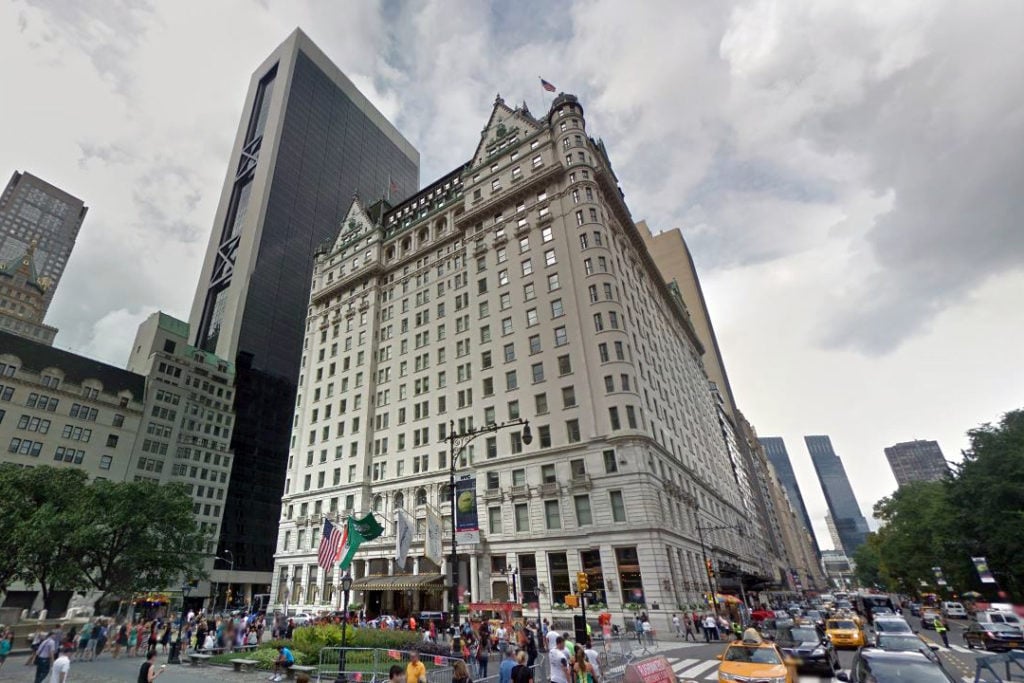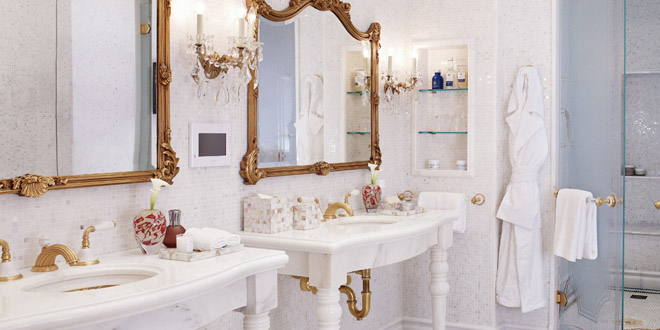Auctions
A Brief Tour of the Plaza Hotel’s History Before It Hits the Auction Block
The famed property is haunted by literary and artistic legends.

Photo: Courtesy of Google Maps.
The famed property is haunted by literary and artistic legends.

Rain Embuscado

New York City’s Plaza Hotel is reportedly hitting the auction block this April—and all things considered, this could be a good thing.
An unidentified insider told Bloomberg, which broke the story, that brothers David and Simon Reuben—the multi-enterprise billionaire tycoons who currently hold the mortgage—are slated to announce plans of foreclosure. According to Bloomberg, this move might finally settle the obscurities surrounding ownership, as the hotel’s majority owner is imprisoned Indian businessman Subrata Roy and his conglomerate Sahara India Pariwar.
Related: 8 Amazing Hotels Around the World with Museum Quality Art Collections
Given the Plaza Hotel’s storied past, we thought this unofficial announcement was an opportune moment to review a few standout historical details about the iconic New York property.
1. The Plaza Hotel once belonged to Donald Trump from 1988 to 1995.
Possession of the property has passed through many hands since it opened over 100 years ago in 1907. But given today’s political conversation, perhaps the most interesting chapter in the textbook is its run under presidential hopeful Donald Trump. In 1988, Trump purchased the building for a then record-breaking $407.5 million—reportedly more than anyone had ever spent on a similar venture before. This yielded up a cameo in the 1992 movie Home Alone 2: Lost in New York.
2. It’s home to mysterious legends…
Guests of the hotel are apt to inquire about the Plaza’s many stories. Arguably the most famous is its role in the Eloise series of children’s book, about a girl who lives at the hotel. So attached to the Eloise legend is the Plaza being been named a “literary landmark” on account of the connection. Its portrait of Eloise, painted by Hilary Knight, featured in the lobby, has been the subject of some famous shenanigans. Here’s the Plaza website:
The Plaza embraced Eloise and all her fans. The Tricycle Garage, inspired by Eloise, opened in 1956. Guests of The Plaza were invited to pick up bikes and tricycles to ride through Central Park. An exhibit of Eloise’s bedroom was opened for special visitors. Inside, Nanny would greet visitors and guide them on a tour where they received a call from Eloise. In 1957 a portrait of Eloise, painted by Hilary Knight, was hung opposite the Palm Court. Mothers and daughters loved having their picture taken with Eloise. In 1960, the portrait mysteriously disappeared after a dance in the ballroom and was never found. The picture was redone and hung in 1964, where it remains today.

Plaza Hotel.
Photo: Courtesy of the Plaza Hotel.
3. …and secret escape routes.
It’s true: $30,000 for a night’s stay can buy guests a private escape via the master bathroom, according to AM New York, The panel reportedly opens to an exit leading to the street.

New York City taxis.
Photo: Courtesy of Wikimedia Commons.
4. New York City’s very first company of motor cabs made their debut on opening day.
In 1907, on the hotel’s opening day, the city’s first prototypes of motorized transportation lined up in front of the building. According to the New York Times‘s description, the vehicles were ”a rich red color picked out with green.” At the time, the description continued, a mile’s ride would set you back 50 cents.
5. The hotel boasts years of service to the rich and famous.
That the rich and famous like Eleanor Roosevelt, Mark Twain, and Groucho Marx stayed at the hotel back in the day is no secret, but it turns out that the building also served as a meeting place for the world’s elite. Writer Truman Capote, for instance, hosted his “Black and White Ball” at the hotel’s Grand Ballroom in 1966. At the cusp of their British invasion, the Beatles stayed at the Plaza during their first visit to the US in 1964.